When winter arrives and the outdoor world fades into shades of gray, your indoor spaces don’t have to follow suit. With the right selection of winter-blooming indoor plants, you can fill your home with vibrant colors, delightful fragrances, and a refreshing touch of nature. These resilient bloomers not only brighten rooms during the coldest months but also improve air quality and boost mood—an essential dose of cheer during shorter, darker days.
In this article, we’ll explore some of the best winter-blooming indoor plants that thrive indoors, offering practical care tips, light and temperature requirements, and creative ways to display them for maximum visual impact.
Why Choose Winter Blooming Indoor Plants?
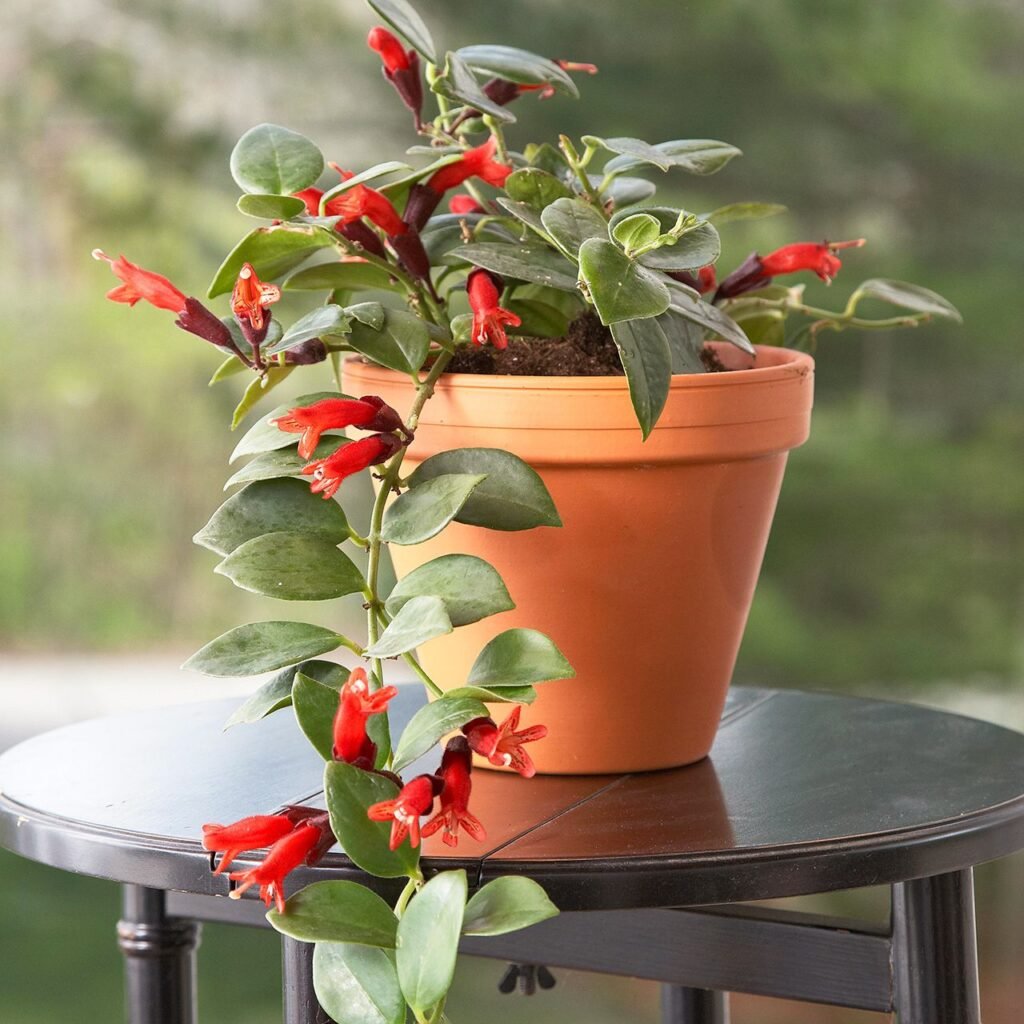
Winter blooming plants bring life and energy into your home at a time when most outdoor gardens lie dormant. They’re perfect for those who crave a natural burst of color during chilly months. Beyond aesthetics, these plants contribute to:
- Improved air quality: Many indoor plants help purify the air by removing toxins.
- Enhanced well-being: Colorful flowers and greenery reduce stress and promote relaxation.
- Year-round interest: Rotating seasonal plants keeps your interiors dynamic and refreshing.
Whether you have a bright sunroom or a cozy apartment corner, there’s a winter bloomer for every indoor environment.
1. African Violet (Saintpaulia)
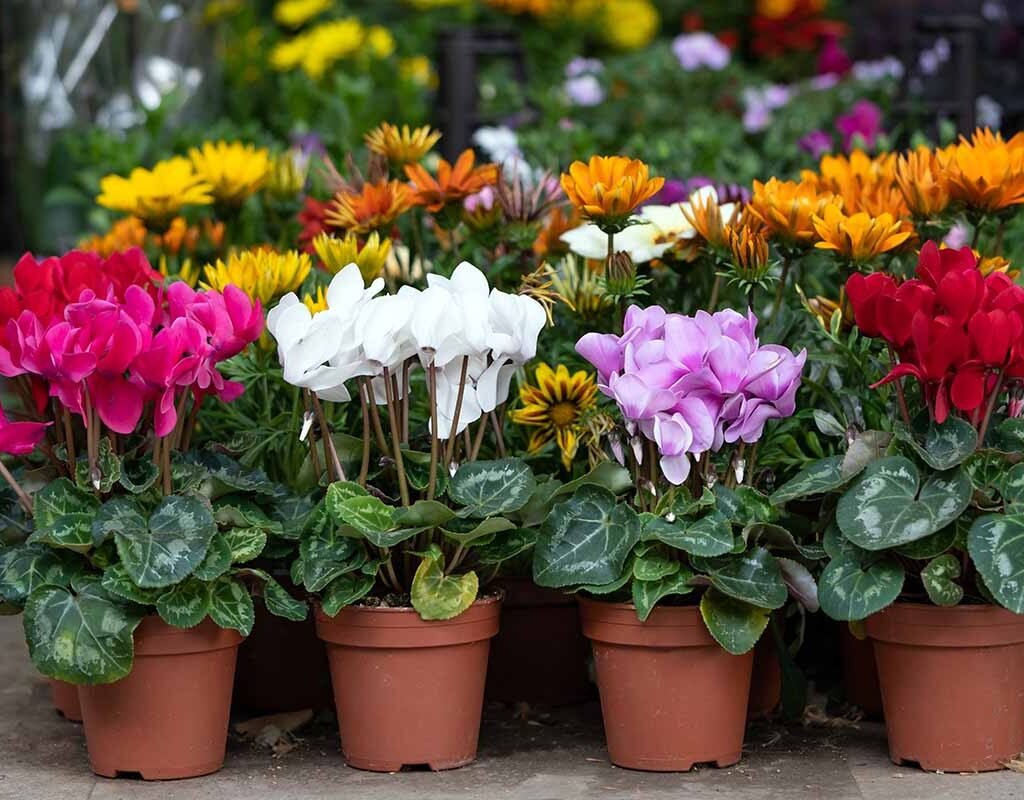
Color Palette: Shades of purple, pink, white, and blue
Light Needs: Bright, indirect light
Temperature: 65–75°F (18–24°C)
African violets are among the most popular indoor flowering plants because they bloom almost year-round—including through winter. Their compact size makes them ideal for small spaces, and their velvety petals add an elegant texture to any room.
Care Tips:
- Keep the soil consistently moist but not soggy.
- Avoid getting water on the leaves to prevent spots.
- Fertilize monthly with a balanced, water-soluble fertilizer designed for blooming plants.
Pro Tip: Place African violets near an east-facing window where they receive gentle morning sunlight. They can also thrive under fluorescent grow lights during darker months.
2. Christmas Cactus (Schlumbergera bridgesii)
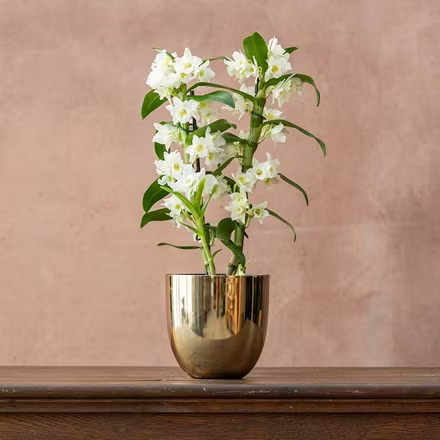
Color Palette: Pink, red, white, orange, or purple
Light Needs: Bright, indirect light
Temperature: 60–70°F (15–21°C)
A holiday favorite, the Christmas cactus bursts into colorful blooms in winter when most plants rest. Unlike desert cacti, this species originates from Brazilian rainforests and prefers humidity and shade.
Care Tips:
- Keep soil slightly moist; allow the top inch to dry between waterings.
- Maintain bright but indirect light to encourage flowering.
- Provide cooler night temperatures (around 55°F) for a few weeks in fall to trigger blooms.
Pro Tip: After blooming, prune lightly to shape the plant and encourage branching for fuller growth next season.
3. Cyclamen (Cyclamen persicum)
Color Palette: White, pink, red, and purple
Light Needs: Bright, indirect light
Temperature: 50–65°F (10–18°C)
Cyclamens are beloved for their upswept petals and heart-shaped, marbled leaves. They thrive in cool indoor environments, making them ideal for winter windowsills.
Care Tips:
- Water from below by placing the pot in a saucer of water for 15–20 minutes.
- Keep the crown (center of the plant) dry to prevent rot.
- When flowering ends, let the plant rest by reducing watering until new leaves appear in autumn.
Pro Tip: Cyclamen perform best in cooler conditions—avoid placing them near heating vents or radiators.
4. Kalanchoe (Kalanchoe blossfeldiana)
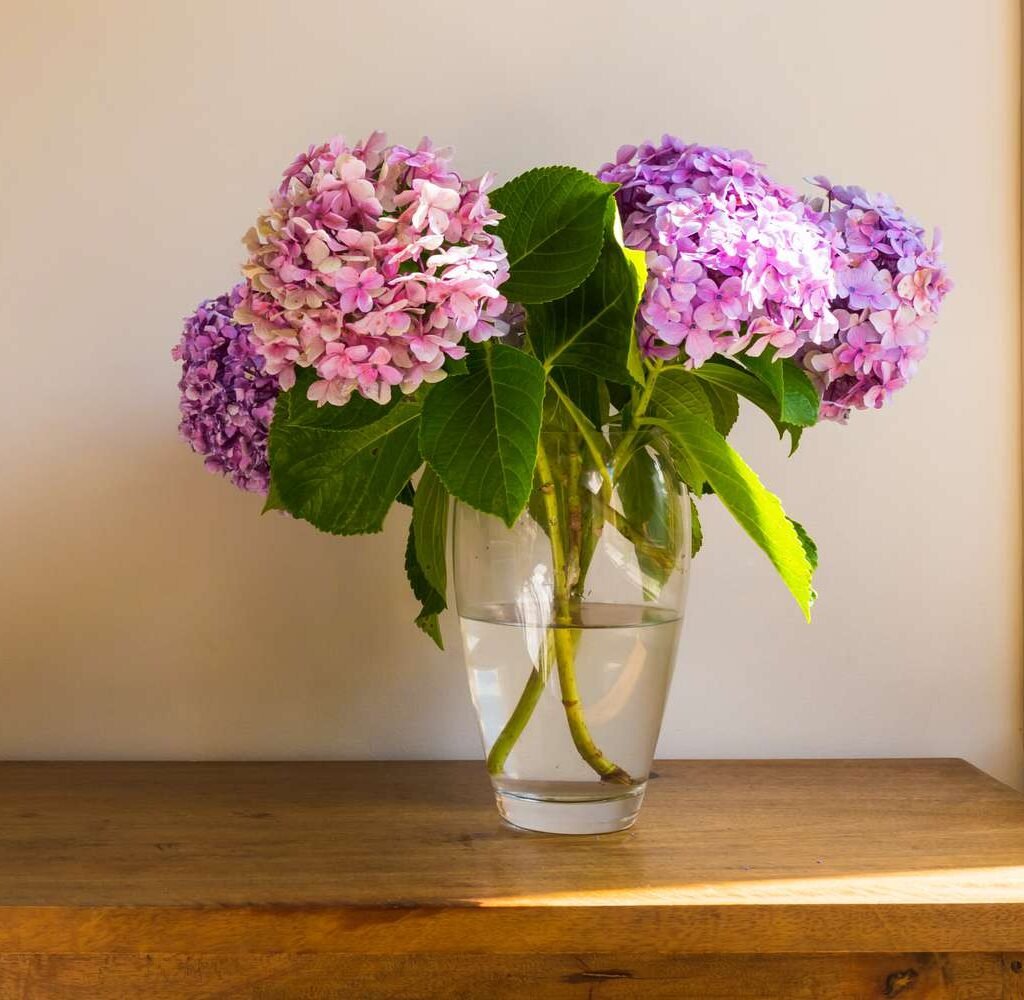
Color Palette: Bright red, orange, pink, yellow, and white
Light Needs: Bright light to full sun
Temperature: 60–85°F (15–29°C)
Kalanchoe is a low-maintenance succulent that adds a burst of color through winter with its clusters of small, long-lasting flowers. Its fleshy leaves retain moisture, making it one of the easiest flowering plants to care for.
Care Tips:
- Water only when the top inch of soil feels dry.
- Provide at least 6 hours of light daily for continuous blooming.
- After flowering, prune spent blooms to encourage new buds.
Pro Tip: Kalanchoe benefits from a rest period—reduce watering for a month after blooming, then resume regular care for another flush of flowers.
5. Amaryllis (Hippeastrum)
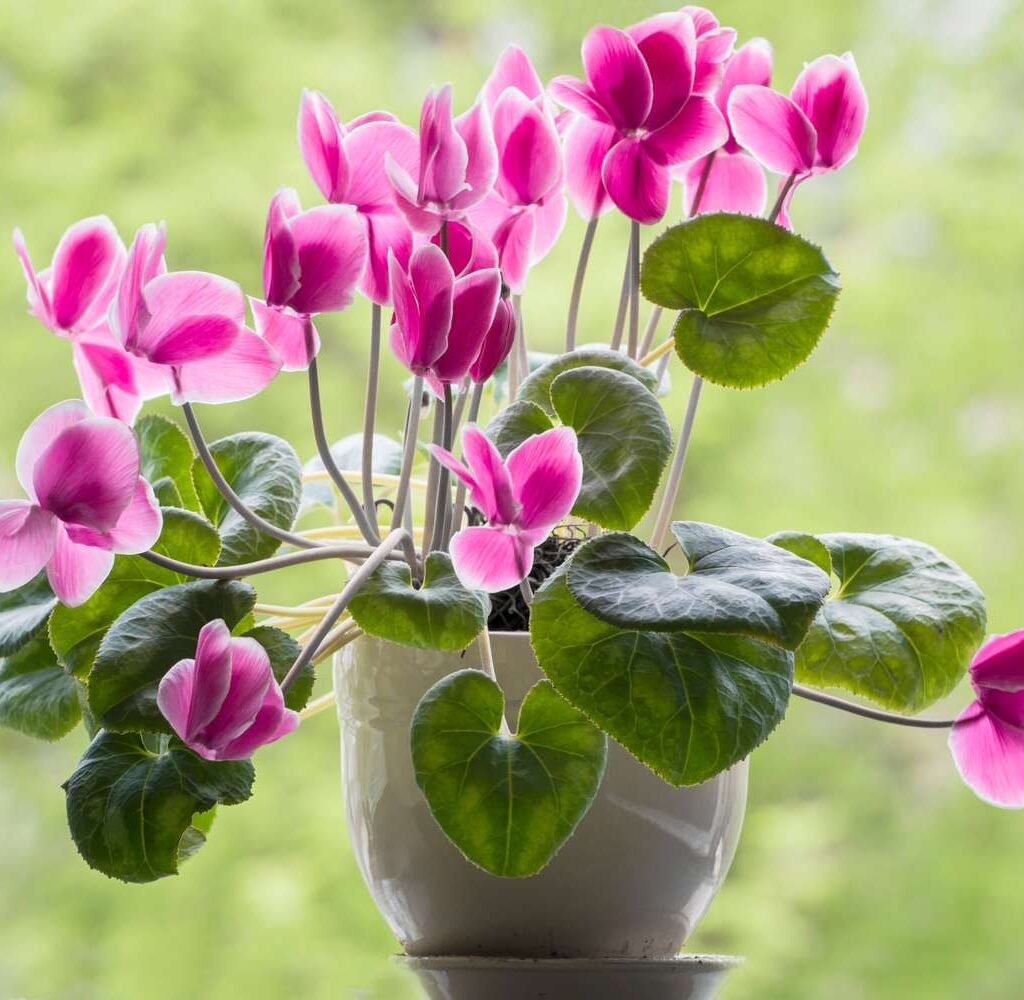
Color Palette: Deep red, white, pink, orange, and striped varieties
Light Needs: Bright light, direct sun for part of the day
Temperature: 60–70°F (15–21°C)
Amaryllis bulbs are famous for producing massive, trumpet-shaped flowers during the winter season. Often used as holiday décor, they can continue blooming year after year with proper post-flowering care.
Care Tips:
- Water sparingly until new growth appears, then keep the soil lightly moist.
- Support tall stems with stakes if needed.
- After flowers fade, cut the stalk but keep leaves intact to recharge the bulb.
Pro Tip: Store bulbs in a cool, dark place for 8–10 weeks before replanting for next winter’s bloom cycle.
6. Orchid (Phalaenopsis and Dendrobium varieties)
Color Palette: White, pink, purple, yellow, and patterned hybrids
Light Needs: Medium to bright indirect light
Temperature: 60–80°F (16–27°C)
Orchids are elegant and long-lasting, making them a perfect choice for winter color. Phalaenopsis orchids, in particular, are ideal for beginners—they bloom for several months with minimal care.
Care Tips:
- Use a well-draining orchid mix and water once the top layer feels dry.
- Mist regularly or use a humidity tray to maintain moisture.
- Fertilize every 2–3 weeks with an orchid-specific fertilizer.
Pro Tip: To encourage reblooming, provide a slight temperature drop (about 10°F cooler at night) for several weeks in fall.
7. Peace Lily (Spathiphyllum)
Color Palette: Elegant white blooms with glossy green foliage
Light Needs: Low to moderate indirect light
Temperature: 65–80°F (18–27°C)
Peace lilies are known for their air-purifying abilities and graceful white “spathes” that appear throughout the year, including winter. Their simplicity makes them perfect for modern or minimalist interiors.
Care Tips:
- Keep soil consistently moist but not waterlogged.
- Wipe leaves regularly to prevent dust buildup.
- Avoid direct sunlight, which can scorch leaves.
Pro Tip: If blooms fade, cut them off at the base to direct energy toward new growth.
8. Begonia (Rieger or Tuberous Begonias)
Color Palette: Vibrant orange, yellow, red, pink, and white
Light Needs: Bright, indirect light
Temperature: 60–75°F (15–24°C)
Winter-blooming begonias, particularly Rieger hybrids, are bred for indoor flowering during colder months. Their lush petals and glossy leaves make them showstoppers in any space.
Care Tips:
- Keep soil lightly moist and provide good air circulation.
- Avoid overwatering—begonias dislike soggy conditions.
- Pinch off faded flowers to extend the blooming period.
Pro Tip: Begonias thrive in humid conditions—group them with other plants or place them on a pebble tray to maintain moisture.
9. Jasmine (Jasminum polyanthum)
Color Palette: White or pale pink blooms with a strong fragrance
Light Needs: Bright light and cool temperatures
Temperature: 55–65°F (13–18°C)
For both color and scent, winter jasmine is unbeatable. It produces clusters of fragrant blooms in mid to late winter, filling the air with a sweet aroma that feels like spring in advance.
Care Tips:
- Provide bright light, including some direct sun.
- Keep soil evenly moist during the growing season.
- After blooming, prune lightly to shape and encourage new shoots.
Pro Tip: A few weeks of cool night temperatures (50–55°F) in early winter help trigger flowering.
10. Azalea (Rhododendron simsii – Indoor Varieties)
Color Palette: Pink, red, coral, and white
Light Needs: Bright, indirect light
Temperature: Cool indoor temperatures (50–65°F / 10–18°C)
Indoor azaleas are compact shrubs that bloom spectacularly through winter. Their dense clusters of flowers create a stunning focal point in living spaces or sunrooms.
Care Tips:
- Keep the soil consistently moist—never let it dry out completely.
- Use acidic potting soil (like azalea or rhododendron mix).
- Remove spent flowers to encourage new blooms.
Pro Tip: Mist regularly to maintain humidity, especially when indoor air is dry due to heating systems.
Arranging and Displaying Winter Bloomers Indoors
The way you display your plants can enhance both aesthetics and health:
- Cluster plants with similar light and humidity needs for easier care and a lush, jungle-like look.
- Use colorful pots or baskets that complement your room’s décor.
- Rotate plants weekly to ensure even growth and exposure to light.
- Add reflective surfaces like mirrors or glass to maximize natural light in darker corners.
Maintaining Bloom and Health Through Winter
Even winter bloomers need special care during the cold season. Follow these general maintenance practices:
- Provide consistent humidity: Use humidifiers or pebble trays to counteract dry indoor air.
- Avoid temperature extremes: Keep plants away from heaters, radiators, and cold drafts.
- Prune and deadhead regularly: This encourages continuous blooms and prevents disease.
- Feed lightly: Use diluted fertilizer once every 4–6 weeks during active blooming.
Conclusion
Winter doesn’t have to mean dull interiors or lifeless windowsills. With the right combination of winter-blooming indoor plants, you can create a colorful, vibrant, and refreshing atmosphere even during the darkest months.
From the velvety hues of African violets to the dramatic flowers of amaryllis and the delicate fragrance of jasmine, each plant brings its own charm and personality to your home. By providing adequate light, humidity, and care, these winter bloomers will not only survive—but thrive—making your home a bright sanctuary of natural beauty all season long.
So, embrace the art of indoor gardening this winter—your colorful oasis awaits right inside your living room.
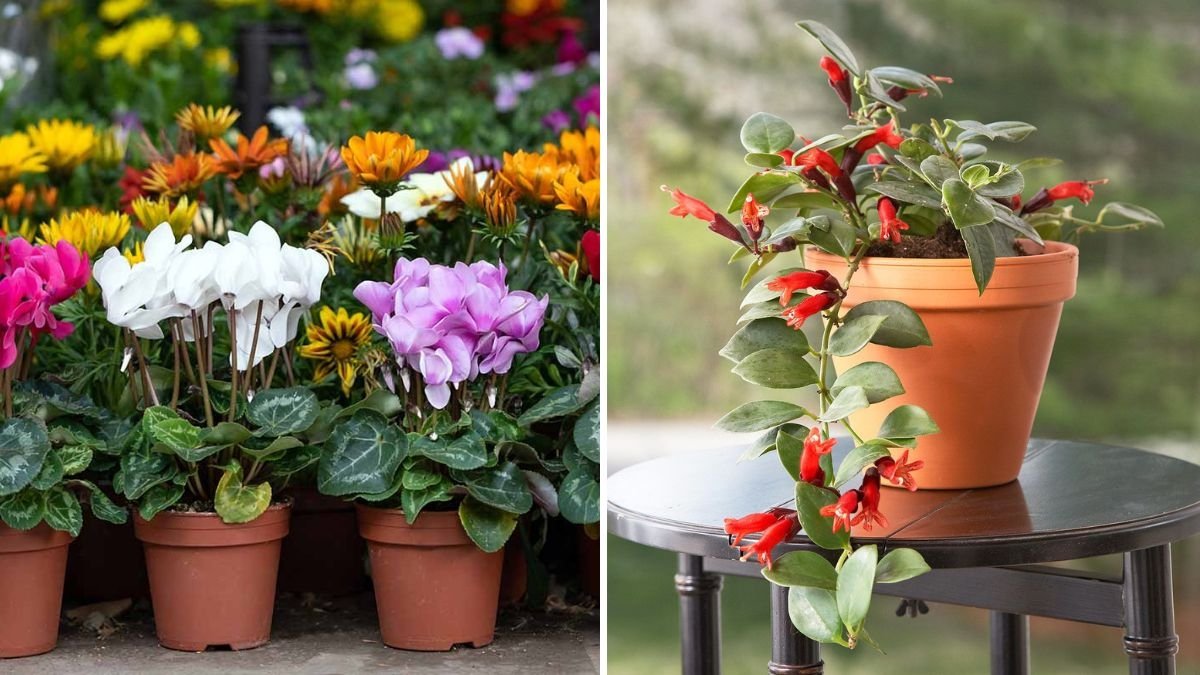




Leave A Comment